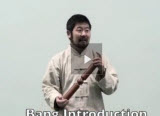The most pervasive human behavior is rationalization. Rationalization happens after people make a mistake.
Here is an example. On our 2004 trip to China, a Chinese master was explaining a technique to Yaron Seidman. He said that his arm was so rubber-like that it was not possible for Yaron to catch it (usually catch means to render it straight thus losing ability to neutralize). Yaron immediately seized and caught him. He could not get out so, instead, he pushed Yaron out. All present could see that he had failed to do what he preached to do. What he said afterward was very typical, “If I neutralized your move, I would have hurt you so I pushed you out. Whatever you do, I can always push you out.” That is a classic case of rationalization. If only people stop this practice, progress can be made.
Rationalization is a roadblock in the learning of Chen Style Taijiquan Practical Method. Most of the time rationalization seems harmless, but it is a hidden obstacle for Taijiquan learning.
Rationalization has the following characteristics:
1). Rationalization is a way to defend oneself from mistakes one has made.
“You have to follow the rules, but I am at a higher level, I don’t have to”.
“I cannot do that because my body is different from yours.”
2). Rationalization is latent and difficult to detect. If you start paying attention to this phenomenon, you will start noticing how pervasive it is among people.
If rationalization is stopped, learning will take place.
Originally published Nov 2007



{ 6 comments… read them below or add one }
I see two primary patterns of rationalization. The first is conscious, within awareness, of the person making the rationalizations. This serves many purposes, such as saving face…but deep down, they are aware of the shortcoming being covered up. The second pattern is unconscious, outside awareness, of the person rationalizing…otherwise know as denial. In this pattern, reality is often time distorted and much more difficult for the individual to identify and correct…especially if the cognitive distortions have been ingrained into the neurological pathways of the mind by years of “living lies”…
The second one is called “Defence mechanisms”. In Freudian psychoanalytic theory, defence mechanisms (or defense mechanisms) are psychological strategies brought into play by the unconscious mind to manipulate, deny, or distort reality (through processes including, but not limited to, Repression, Identification, or Rationalization), and to maintain a socially acceptable self-image or self-schema. This is worse than the first case in learning Taiji.
I think the “antidote” to rationalization might be to have a set of clearly defined rules and principles that must be strictly adhered to. This can root deep in the psyche, having profoundly beneficial results, effecting all our behaviors, reversing our normal desire to blur the lines for our convenience.
Yes, indeed! Now the problem is that nobody will agree on the “clearly defined rules and principles” because they all have their own!
So true! But I think your principles are getting burned into my brain, because when I first saw the post, I thought it said ” Rotationalization ” …… not kidding! 🙂
I think all of us that are committed to the rules and principals, as passed down to us by Master Chen, are still susceptible to rationalizations. In our minds we may think we are following the rules and principals…then when corrected by a peer, elder brother/sister or Master Chen, rationalization may come into play…so along with following clearly defined rules and principles, letting go of ego, or pride, is necessary as well…